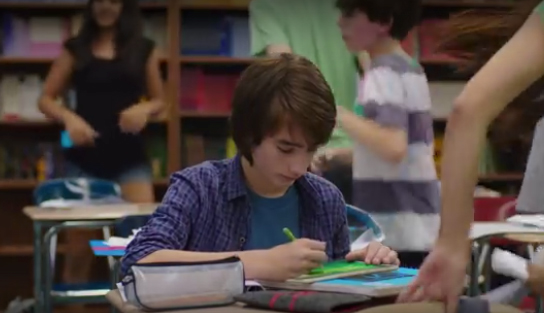
Contributed by Jonathan Stevenson / Ira Sachs makes sensitive movies about contemporary urban life that are distinguished by their grand refusal to present stock characters or clich�d set-ups. Everything for him is a very particular situation, its resolution or unraveling organically driven by the unique traits and freight of the people involved. Despite this admirably realistic approach to life�s challenges, however, art as vocation has played a significant part in each of Sachs�s two most recent movies, Love Is Strange (2014) and Little Men (2016). There is, of course, a lot more to these movies than a paean to the aesthetic life. If a filmmaker as devotedly non-reductive as Sachs sees fit to reiterate art as a kind of existential linchpin, he is likely onto something bigger.
Love Is Strange is a triumph of tone as well as content about two older gay men (flawlessly played by Alfred Molina and John Lithgow) who have just married. Important gay issues arise and drive the plot. Molina�s George loses his job as a music teacher at a Catholic school over his sexuality; as a result, the two can no longer afford their apartment and must board uncomfortably with friends and family until they find a new one. But the movie is more generally about the poignant brutality of the passage of time and the profound challenge of finding � really finding � a place in the world before you leave. Lithgow�s Ben is a painter ever on the cusp of career success, with less and less time to achieve it. Yet he takes refuge from this mortal doubt in painting itself, and it is one of his paintings that triggers his great-nephew�s coming-of-age epiphany in the movie�s last scenes. It�s a modest legacy, perhaps, but a deeply felt one.

In Little Men, Sachs takes on the travails of gentrification. An Upper West Side couple (Greg Kinnear and Jennifer Ehle, both very good) moves into a house in Brooklyn, left to the husband by his father, with their teenage son Jake, seeking to raise the below-market rent of the Chilean single mother (Paulina Garcia, brilliant) who runs the dress shop downstairs. Her maladroit attempts to exploit the couple�s guilt backfire. Meanwhile, Jake and the dressmaker�s son Tony � the one an introverted aspiring painter, the other an outgoing would-be actor � become fast friends. The kids (Theo Taplitz and Michael Barbieri, with fine chemistry) plan to go to the Fiorello La Guardia High School for the Performing Arts together and proceed to success as artists, but acrimonious eviction proceedings force them apart.
The movie closes with Jake, now enrolled in La Guardia, studiously drawing with other gifted students in a quiet room at the Met. He has just spied Tony across the atrium, theatrically holding forth about a painting to friends from his tough parochial school. Tony�s path may not be as gilded as Jake�s, but Tony has earlier revealed his intense desire and raw talent in a rollicking Meisner-technique repetition exercise. Other boys might have had baseball or hell-raising. These two have art in their corner. The friendship that cultivated their sensibilities, whether revived or not, will not have been for nothing.
Related posts:
Art and Film: Children as materials in The Family Fang
On FILM: Richard Linklater�s school of life
















